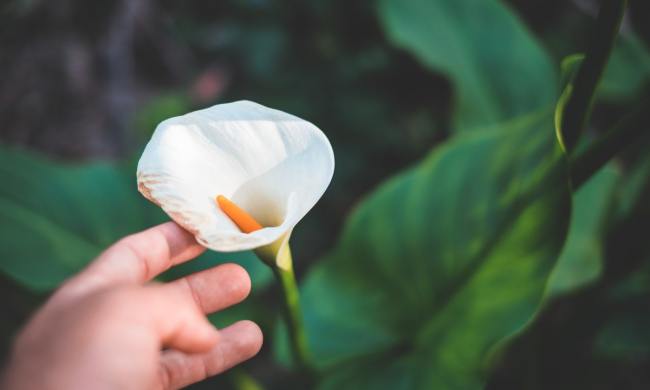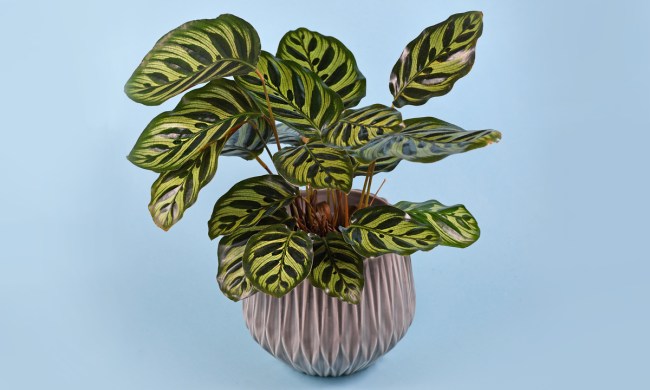Do you love the look of bamboo, but don’t have the space to grow it in your garden? Dracaena sanderiana, also known as lucky bamboo, might just be the right plant for you! Lucky bamboo looks striking like bamboo, but it's actually a species of dracaena. Like most other dracaena varieties, lucky bamboo is a beautiful, relaxing, and low-maintenance houseplant. It can be grown in soil or water, and is remarkably easy to care for. Here's how to grow your own.
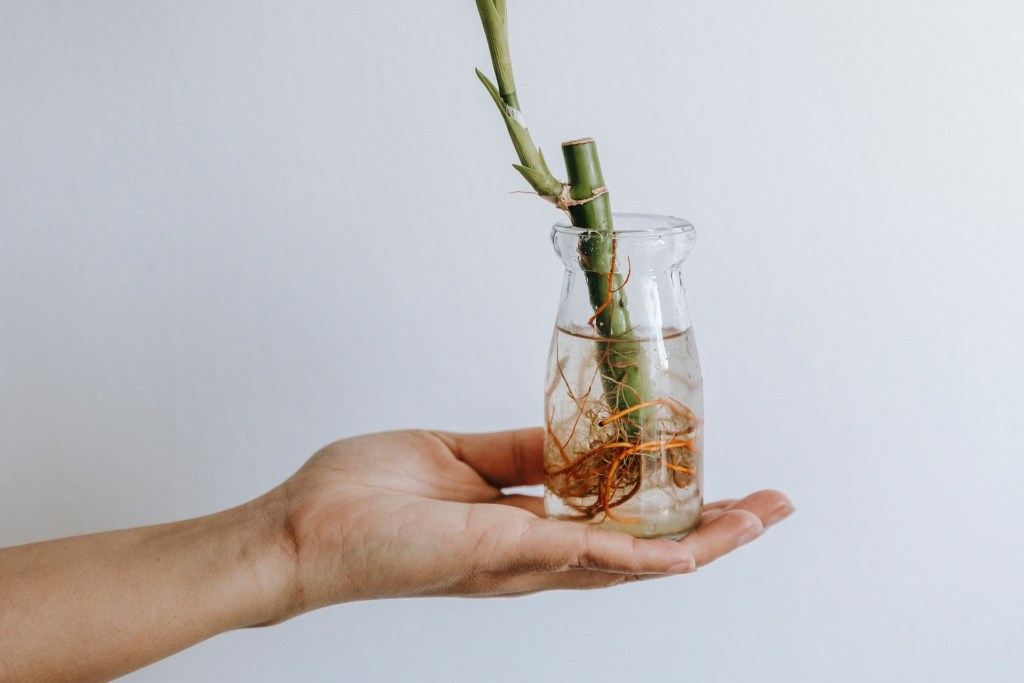
What is Dracaena sanderiana?
Dracaena sanderiana may look a lot like bamboo, but don’t be fooled! Lucky bamboo is not closely related to true bamboo at all. In fact, it’s not even native to Asia. Dracaena sanderiana is native to central Africa, and it’s actually a member of the asparagus family.
Lucky bamboo can grow up to 5 feet tall, and it typically won't reach its full height when grown indoors. This makes Dracaena sanderiana a perfect plant to add to any relaxing Japanese-style garden if you’re short on space. Additionally, this plant is easy to care for, making it a great choice for beginners.
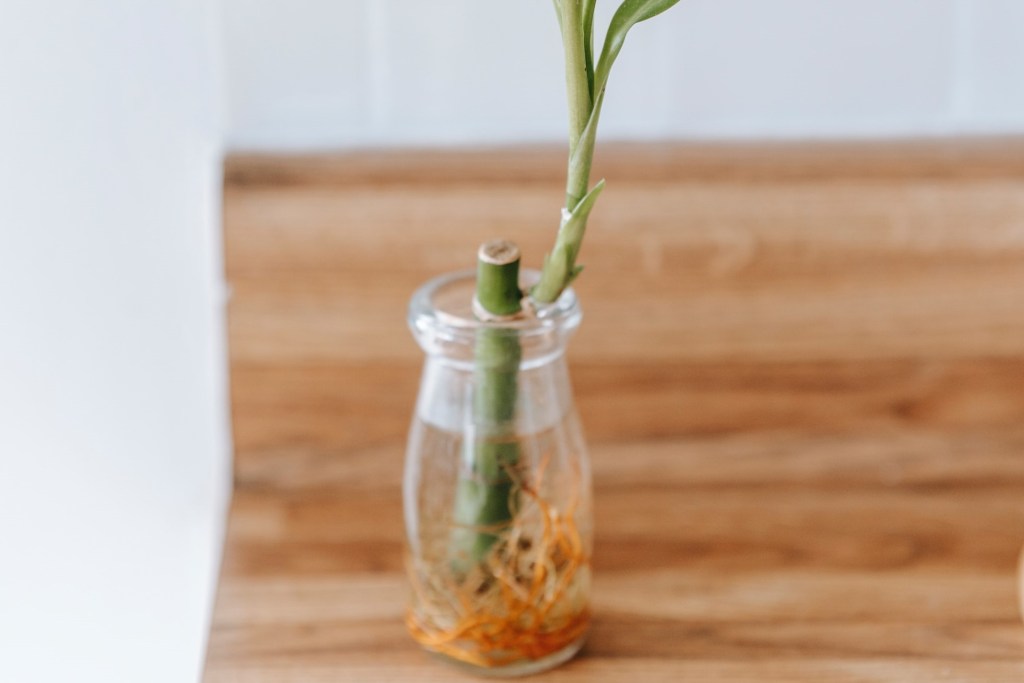
Growing lucky bamboo in water
Lucky bamboo looks elegant when grown in water. Here’s what to do:
Step 1: Choose a container that's wide enough for the roots and tall enough to keep from tipping over. Clear containers are also popular, as they let you view the roots as they grow.
Step 2: Remove your lucky bamboo from its pot, brush the dirt of its roots, and give the roots a rinse. If you’re transplanting your lucky bamboo from soil to water, you need to clean the roots. Otherwise, your bamboo will be sitting in dirty water, which increases its chances of developing a fungal infection.
Step 3: Place your lucky bamboo in the container. You can add pebbles to help hold it up or as decoration, if you like.
Step 4: Add enough room temperature, chlorine-free water to cover the roots.
Step 5: Replenish or replace the water once a week. This is a good time to clean the container, as well.
Step 6: Place your lucky bamboo in indirect or diffused sunlight.
Step 7: Add a liquid fertilizer to the water once a month to every other month.
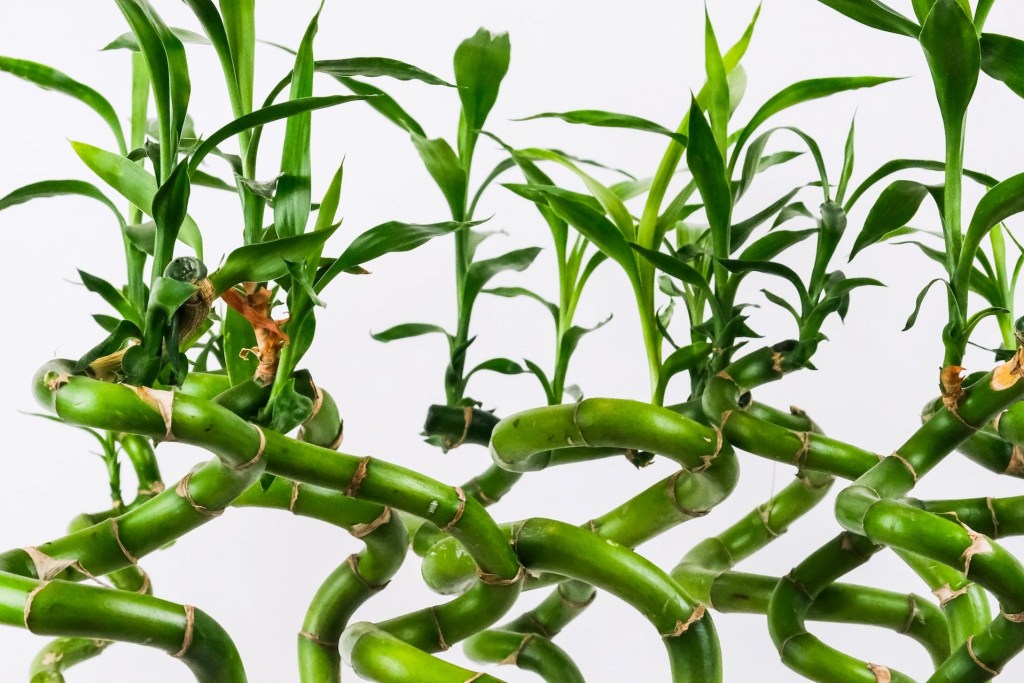
Growing lucky bamboo in soil
Follow these steps to care for your dracaena in soil:
Step 1: Choose a pot with drainage holes.
Step 2: Plant your lucky bamboo in rich, well-draining soil.
Step 3: Water frequently, but lightly, and with low-chlorine water. Lucky bamboo needs consistently damp soil, but can develop problems in soggy or muddy soil. Additionally, it's sensitive to chlorine.
Step 4: Place your Dracaena sanderiana in diffused or indirect light. Direct light can burn the sensitive leaves.

How to tell the difference between lucky bamboo and true bamboo
If you get your lucky bamboo from a nursery, it should be labeled, but what if you got your lucky bamboo as a gift or ordered it online and think there may have been a mix up? While bamboo and lucky bamboo look quite similar, there are some key differences you can look for.
One of the easiest differences to look for is hollow stems. Bamboo plants are hollow, while lucky bamboo plants are not. Taking a cutting from your plant and checking the inside is the quickest and easiest way to verify that you have the correct plant.
The other easy to spot difference is their growth rates. Lucky bamboo grows moderately quickly, ranging from a few inches to a foot per year, depending on the conditions it's grown in. However, true bamboo is the fastest growing plant on Earth, with some bamboo species clocking in at an average of 35 inches per day! So if your plant is too small to take a cutting from, just leave it for a few days and see how much it grows.
Lucky bamboo is a great choice for gardeners of all experience levels who are tight on space or love a classic aesthetic. It makes an excellent desk plant, but you can also let it grow to its full height if you need to fill space. You can grow it indoors or out, and in water or soil. Try planting Dracaena sanderiana today, and maybe you’ll get lucky!


